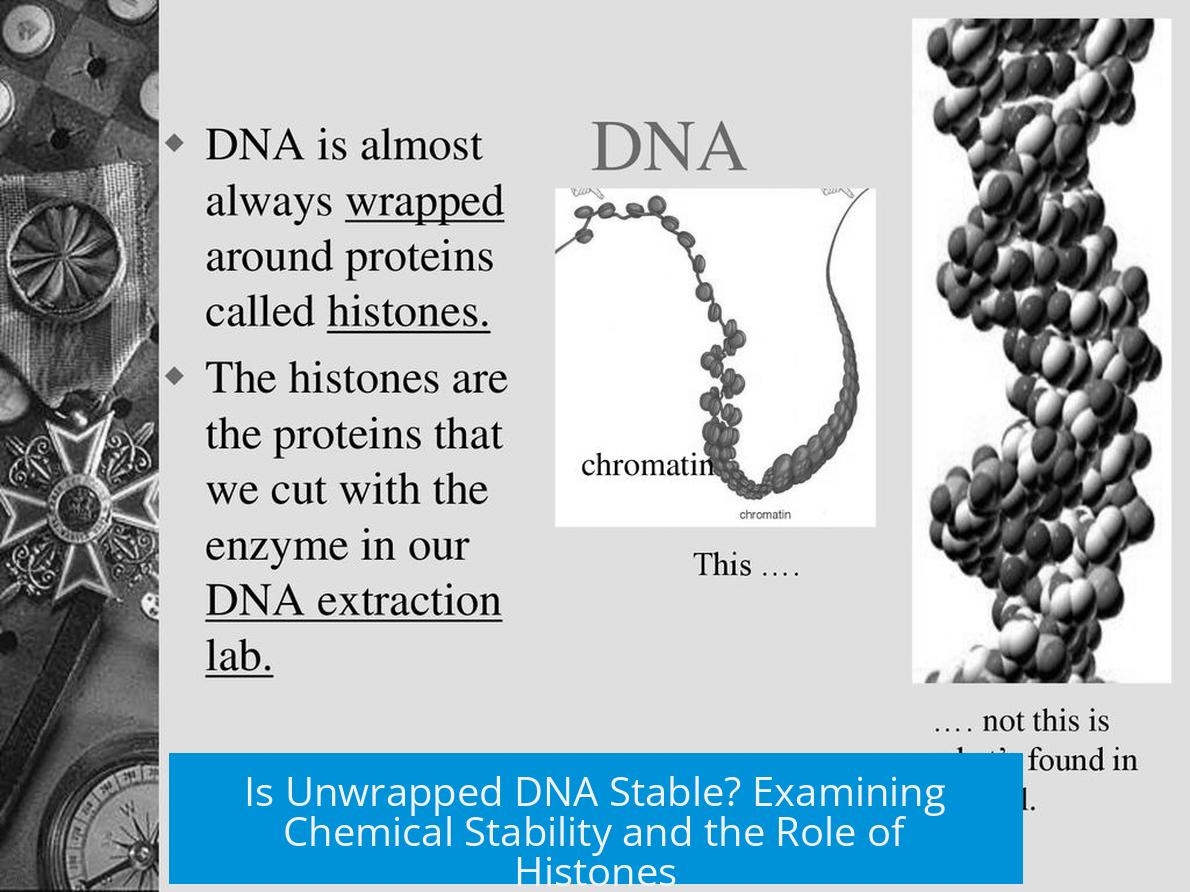Is DNA – on its own, not wrapped around histones – stable?
DNA remains chemically stable even when not wrapped around histones, although some DNA conformations rely on histones for stability. The double-stranded DNA (dsDNA) structure is inherently stable and maintains integrity without the presence of histones or other folding proteins.
Chemical Stability of Untied DNA
The backbone of DNA is composed of sugar-phosphate groups linked by strong phosphodiester bonds. This configuration is highly resistant to spontaneous breakdown. Studies show that dsDNA itself has a half-life of over 500 years under neutral conditions, reflecting extraordinary chemical stability.
Bacteria offer a practical example: they lack nucleosomes—DNA wrapped around histone proteins—yet their DNA remains stable enough to support life and essential functions. This absence of histones does not significantly compromise the DNA’s chemical integrity.
Role of Histones in DNA Stability
Histones facilitate the packaging of DNA into chromatin, which alters the higher-order structure and certain conformations of DNA. Some DNA forms specifically stabilized by histone interaction lose structural stability when histones are absent. However, these conformations are exceptions rather than the rule.
The chemical structure of DNA itself is stable without these folding aids. Histones predominantly influence chromatin architecture and gene regulation rather than the fundamental stability of the DNA molecule.
Energy Requirements for DNA Processing
Initiating DNA transcription or replication demands energy input. Proteins bind and exert mechanical work to alter the stable DNA conformation, enabling access to genetic information. This necessity underscores the stable, resistant nature of naked DNA.
Comparison with RNA Stability
Single-stranded RNA (ssRNA) does not bind histones but can fold into complex structures. RNA is chemically less stable than DNA due to the presence of a 2′ hydroxyl (OH) group, which participates in hydrolysis and other reactions. DNA’s lacking 2′ OH enhances its longevity and robustness.
Summary of Key Points
- DNA is chemically stable without histones, confirmed by its long half-life and presence in bacteria lacking nucleosomes.
- Certain DNA conformations depend on histones for structural stability, but the DNA molecule itself is fundamentally stable.
- Energy input is required to modify DNA conformation during transcription and replication, reflecting DNA’s stable nature.
- DNA’s stability surpasses RNA’s due to chemical differences, particularly the absence of the 2′ OH group in DNA.
Is DNA chemically stable without histones?
Yes. Double-stranded DNA remains chemically stable even without histones or folding structures. It maintains its integrity for long periods.
Do histones affect DNA stability?
Histones help stabilize certain DNA conformations. Without histones, some specific structures become unstable, but the DNA molecule itself stays stable.
How does bacterial DNA stability compare without nucleosomes?
Bacteria lack nucleosomes but have fairly stable DNA. This shows that DNA stability does not rely entirely on histones for protection.
Why do DNA processes like transcription require energy?
DNA is very stable, so initiating replication or transcription needs energy. Proteins bind DNA and change its shape to start these processes.
Is DNA more stable than RNA without histones?
Yes. RNA lacks histone binding and is less stable chemically due to reactive groups. DNA is more chemically durable and has a longer half-life.





Leave a Comment